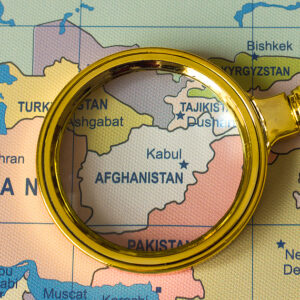We made the suggestion in this column on September 7 it was time to begin the after-action-review (AAR) that the Chairman of the Joint Chiefs of Staff Gen. Mark Milley said would make sense after securing the Kabul airport and evacuating our American citizens.
One of the key questions we wanted to be answered was who exactly did we kill in a strike from an unmanned aerial vehicle (UAV, better known as a drone)?
The reason for the question, which many did not bother to ask, is that we wanted to know the role of the White House in targeting decisions and even the attack itself. Shortly after the attack, we were told the targets were a “planner and facilitator,” a curiously titled name for an attacker or attackers.
We know now the answer to part of the question. We killed 10 innocent civilians including seven children. According to U.S. Central Command Commander, Gen. Kenneth McKenzie, the UAV tracked the target for eight hours. We attacked using a standard of “reasonable certainty” of a threat to our forces.
“We did not have the luxury of time to develop a pattern of life and to do a number of other things…probably our strikes in Afghanistan going forward will be under a higher standard,” McKenzie said. “That’s a policy matter, not a purely military matter.”
Administration officials at the time said the attack was likely “righteous,” according to Milley, and demonstrated our “over-the-horizon” capability, according to White House spokesperson Jen Psaki, both claims which are now obliterated in a way far worse than simply missing the target would have been.
One question that has no clear answer to date: What role did the White House play in target selection and the firing itself? We may not ever get the answer but we need to keep asking.
We also asked for the personal recommendations regarding the decision to remove forces of Defense Sec. Lloyd Austin, Milley, National Security Advisor Jake Sullivan, Vice-President Kamala Harris, and McKenzie.
We should have added one more name, Commander of U.S. and NATO forces in Afghanistan, Gen. Scott Miller.
Although he left command on July 1, 2021, he reportedly made his position clear in front of the Senate Armed Services Committee that “he opposed the total withdrawal of troops before President Biden made the final decision. In a closed briefing… Miller confirmed that he registered his dissent with… Austin, Milley, (and) McKenzie…”
To this point, we have not heard the personal recommendations of most of this group, but what is the likelihood that they differed greatly from Miller? The public deserves to know what the president heard.
While it’s the president’s prerogative as commander-in-chief to accept any or none of the advice he receives, saying there was no dissent contradicts what he told the public during his interview with George Stephanopoulas in an ABC interview. If he chooses to say what happened publicly, it is vital that we hear the full truth.
We still do not know if Biden asked then-Afghan President Ashraf Ghani to lie during a July 23 conversation when, according to reports of the transcript, that “…there is a need, whether it is true or not, there is a need to project a different picture,” about the conditions on the ground.
The White House has to this point successfully avoided answering this question, hiding behind the questionable tactic of refusing to discuss private conversations. There is no justifiable reason to dodge any longer. Ghani was effectively deposed shortly after the surrender.
As to our question about the fate of women and girls in Afghanistan, something multiple administrations raved about as a supreme achievement based on our presence we simply do not hear anything at all.
Finally, the rescue of our stranded Americans and allies is still apparently ongoing but not complete. If not for the efforts of U.S. veterans and non-government organizations (and probably some heroic State Department personnel) it is not clear at all that any progress would have been possible.
Only through continued pressure will answers come to key questions about the evacuation operation following the initial departure of U.S. military forces, the attack on U.S. service members at the airport in Kabul, the drone attack on civilians, the status of women and girls in Afghanistan, and ongoing efforts to extract Americans and allies. Americans have to demand the answers.

